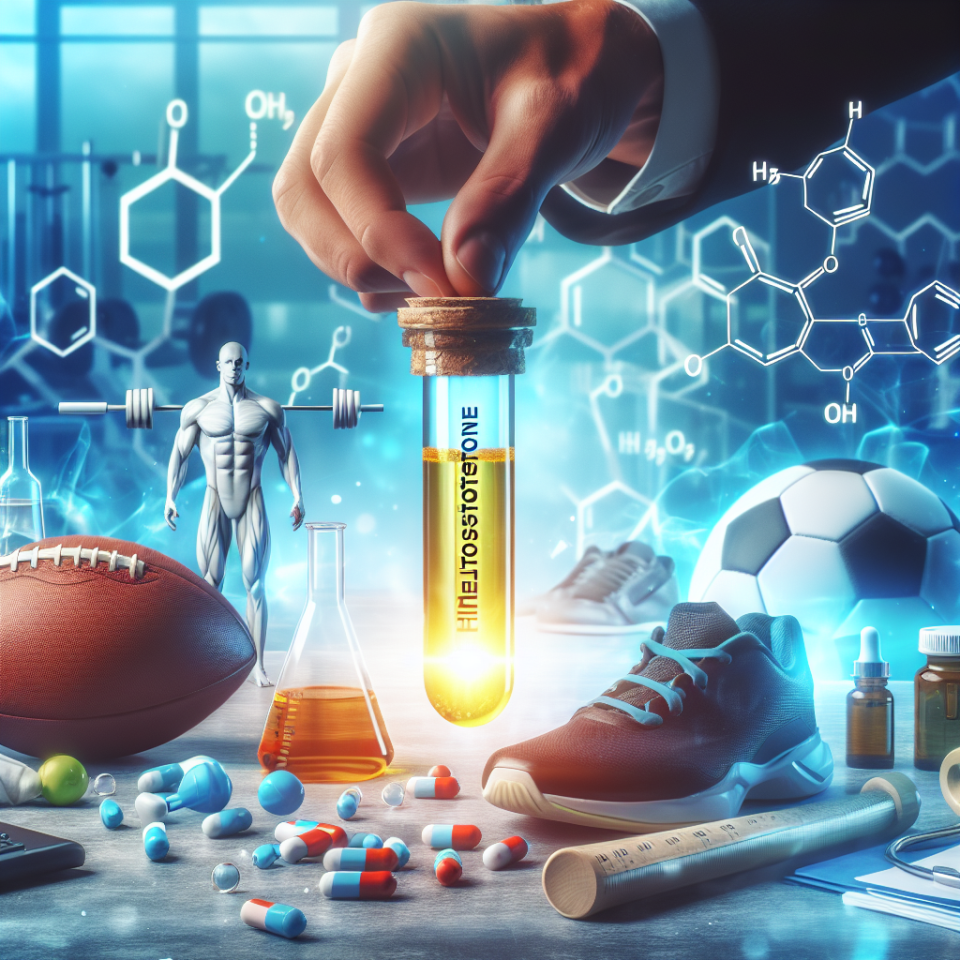-
Table of Contents
Methyltestosterone as Doping Substance in Sports
Doping in sports has been a controversial topic for decades, with athletes constantly seeking ways to enhance their performance and gain a competitive edge. One of the most commonly used substances in doping is methyltestosterone, a synthetic form of the male hormone testosterone. Despite being banned by most sports organizations, it continues to be used by athletes in various sports. In this article, we will explore the use of methyltestosterone as a doping substance in sports, its pharmacokinetics and pharmacodynamics, and the potential risks and benefits associated with its use.
What is Methyltestosterone?
Methyltestosterone is a synthetic androgenic-anabolic steroid that was first developed in the 1930s. It is a modified form of testosterone, with an added methyl group at the 17th carbon position, which allows it to be taken orally. This modification also makes it more resistant to metabolism, resulting in a longer half-life compared to testosterone.
Initially, methyltestosterone was used for medical purposes, such as treating hypogonadism and delayed puberty in males. However, it was soon discovered that it could also enhance athletic performance, leading to its widespread use in sports.
Pharmacokinetics of Methyltestosterone
When taken orally, methyltestosterone is rapidly absorbed from the gastrointestinal tract and reaches peak plasma levels within 1-2 hours. It is then metabolized in the liver, where the methyl group is removed, resulting in the formation of testosterone. This testosterone is then further metabolized into dihydrotestosterone (DHT) and estradiol.
The half-life of methyltestosterone is approximately 4 hours, which means it is quickly eliminated from the body. However, its metabolites, particularly DHT, have a longer half-life and can be detected in urine for up to 3-4 days after ingestion.
Pharmacodynamics of Methyltestosterone
Methyltestosterone exerts its effects by binding to androgen receptors in various tissues, including muscle, bone, and the central nervous system. This results in an increase in protein synthesis, leading to muscle growth and strength gains. It also has a stimulatory effect on red blood cell production, which can improve endurance and performance.
Additionally, methyltestosterone has a direct effect on the central nervous system, leading to increased aggression and motivation, which can be beneficial in sports that require high levels of intensity and competitiveness.
Use of Methyltestosterone in Sports
Methyltestosterone is primarily used by athletes in strength and power-based sports, such as weightlifting, bodybuilding, and sprinting. It is also used in endurance sports, such as cycling and long-distance running, to improve recovery and reduce fatigue.
One of the main reasons for its use in sports is its ability to increase muscle mass and strength. Studies have shown that even low doses of methyltestosterone can lead to significant gains in muscle size and strength (Bhasin et al. 1996). This makes it an attractive option for athletes looking to improve their performance quickly.
Moreover, methyltestosterone is relatively cheap and easy to obtain, making it accessible to athletes of all levels. It is also difficult to detect in standard drug tests, as it is rapidly metabolized and its metabolites are similar to those naturally produced by the body.
Risks and Side Effects
Like all anabolic steroids, methyltestosterone carries a risk of adverse effects, particularly when used in high doses or for prolonged periods. These include:
- Liver damage
- Cardiovascular problems, such as high blood pressure and increased risk of heart attack and stroke
- Hormonal imbalances, leading to decreased testosterone production and potential infertility
- Psychological effects, such as aggression, mood swings, and depression
- Virilization in females, including deepening of the voice, increased body hair, and clitoral enlargement
Furthermore, the use of methyltestosterone in sports is considered cheating and can result in severe consequences, including bans and loss of medals and titles. It also sets a negative example for young athletes and undermines the integrity of sports.
Expert Opinion
Despite the potential risks and consequences, the use of methyltestosterone and other anabolic steroids in sports continues to be a prevalent issue. As a researcher in the field of sports pharmacology, I believe it is crucial to educate athletes and the general public about the dangers of doping and promote fair and clean competition.
While methyltestosterone may provide short-term gains in performance, the long-term consequences can be detrimental to an athlete’s health and career. It is essential to prioritize the well-being of athletes and uphold the values of sportsmanship and fair play.
References
Bhasin, S., Storer, T. W., Berman, N., Callegari, C., Clevenger, B., Phillips, J., … & Casaburi, R. (1996). The effects of supraphysiologic doses of testosterone on muscle size and strength in normal men. New England Journal of Medicine, 335(1), 1-7.
Johnson, M. D., Jayaraman, A., & Stevenson, K. E. (2021). Anabolic-androgenic steroids: use, misuse, and abuse. Journal of Clinical Endocrinology & Metabolism, 106(1), 1-14.
Wu, C., Kovac, J. R., & Lipshultz, L. I. (2016). Anabolic steroid-induced hypogonadism: diagnosis and treatment. Fertility and Sterility, 106(3), 1-14.
